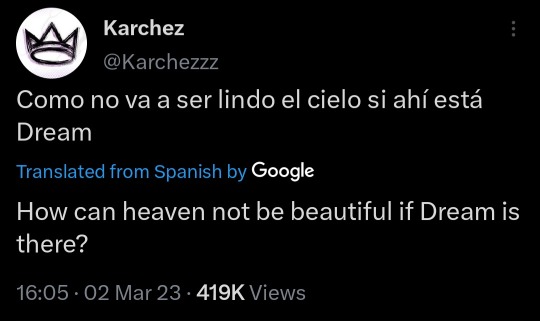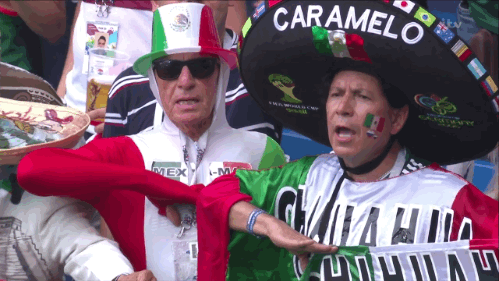#dream is hispanic
Text

LOOK AT THEM
#im trying to practice more skin tones heksfmvrei#blue is supposed to african/ginger#dream is hispanic#i dont even know what ink is but he is NOT white#undertale#undertale au#discs digital art attempt#underverse fanart#SLAYYY#star sanses#blueberry#blueberry sans#blue!sans#dreamtale#dream!sans#dream!tale#dream sans#inktale#ink sans#ink!sans#god i hate tagging#STILL UNSURE ABOUT MY BLUE DESIGN#I CANT DECIDE IF HE HAS LONG HAIR HELP
90 notes
·
View notes
Text



Loíza (Spanish pronunciation: [loˈisa]) is a town and municipality on the northeastern coast of Puerto Rico, north of Canóvanas; east of Carolina, Puerto Rico; and west of Río Grande, Puerto Rico. Loíza is spread over five barrios and Loíza Pueblo (the downtown area and the administrative center of the city). It is part of the San Juan-Caguas-Guaynabo Metropolitan Statistical Area. It is renowned for its rich Afro-Puerto Rican culture and heritage.

Some say its name comes from a female cacique, named Loaíza or Yuíza, who governed the region formerly called Haimanio, on the shores of the Río Grande de Loíza. It is said that this cacique might have married a mulatto conquistador called Pedro Mejías, but there is no evidence of this. Other sources point to a Spanish landlord named Iñigo López de Cervantes y Loayza, who owned a lot of the territory, and was renowned among governors and colonists of the time.
In 1692, Loíza was officially declared an urban area due to its population (100 houses and 1,146 residents), but it was in 1719 that the Spanish government declared it as an official town. It was founded by Gaspar de Arredondo.

Puerto Rico was ceded by Spain in the aftermath of the Spanish–American War under the terms of the Treaty of Paris of 1898 and became a territory of the United States. In 1899, the United States Department of War conducted a census of Puerto Rico finding that the population of Loíza was 12,522.

#african#afrakan#kemetic dreams#africans#brownskin#brown skin#afrakans#african culture#afrakan spirituality#afro rican#afro puerto rican#puerto rican#puerto rican goddess#boricua#dominican#hispanic#mexican#latina
55 notes
·
View notes
Text

Edgar my Latina queen
#electric dreams edgar#electric dreams#he’s Hispanic because I said so and so did my friends#he has tears in his Latina eye 😔#whiteboard fox#digital art#doodle
18 notes
·
View notes
Text

Antonio de Pereda y Salgado (Spanish, 1611-1678)
El sueño del caballero, 1650
Real Academia de Bellas Artes de San Fernando, Madrid
#Antonio de Pereda y Salgado#Antonio de Pereda#spanish art#spanish#spain#el sueno del caballero#the knight's dream#1650#knight#knighthood#art#fine art#european art#classical art#europe#european#fine arts#oil painting#europa#mediterranean#angel#christentum#western civilization#iberia#iberian#hispanic#latin
24 notes
·
View notes
Text

Can we talk about this Karchez tweet from yesterday please
325 notes
·
View notes
Text

Hey, Lolita, hey!
#coquette#hyperfemininity#nympette#nymph aesthetic#nymphcore#waifspo#hyperfemmine#dollete aesthetic#manic pixie dream girl#lana del rey#hispanic coquette
22 notes
·
View notes
Text
this whole 'war' is actually so funny bc in terms of the ccs themselves, it is fully one-sided. like the dream team's various jokes, dream saying he felt q didn't deserve the award over foolish. throughout it all, q has not once even mentioned them. the closest thing you could call a response was him retweeting his own tweet telling his fans not to bother with people who discredit his work and that he's confident in it.
like he's actually doing crazy well post-quarantine, whereas everyone else's viewerships dropped considerably. like it's just genuinely so funny to see dream and his stans be so jealous and mad that they pick a fight that they aren't gonna win or even get a reaction out of.
#like i truly doubt q is ever gonna talk about the drama with them#at most he'll tell his fans not to stress themselves out bc that's the sort of philosophy he's got with being a cc#like as funny as the timing with the videos are it's not like he planned to release that vid after dream#like quackity already had announced this announcement was coming#q goes to therapy and it shows#i think the dteams viewership stats is getting to them#and i think the qsmp effectively (accidentally or not?) cut them out of the hispanic side of twitch
119 notes
·
View notes
Text
I had a dream that Oscar Issac, I think, was in charge of a local grocer in my hometown. and Pedro Pascal was his truck driver-esque friend that hung around. They had an extensive range of coffee. It was an incredibly mundane dream considering I have like, .1 interest in either of them as actors.
#I mean at least it wasn't Vladimir Putin again#Putin literally haunts my dreams and I fear his return#I don't think about any of these people on any sort of basis#why do they keep showing up in my dreams#the celebrities I actually do think about don't even do that#Russian dictators and Hispanic actors making cameos in my dreams
9 notes
·
View notes
Text


Felt cute, might delete later 🍒
#coquette#coquette aesthetic#dream girl#girl blogger#hispanic coquette#lana del rey#pinterest#girlblogging#it girl
20 notes
·
View notes
Text

#dreams#dream#español#spanish#hispanics#latinos#latino#latina#creative writing#writing#writers on tumblr#writing community#writerscommunity#writers#writeblr#writer#writers of tumblr#online diary#tumblr diary#diary entry#dear diary#diary#journal#digital diary#journal entry#digital journal#my journal#journaling
6 notes
·
View notes
Text

The Invention of Hispanics: What It Says About the Politics of Race
America’s surging politics of victimhood and identitarian division did not emerge organically or inevitably, as many believe. Nor are these practices the result of irrepressible demands by minorities for recognition, or for redress of past wrongs, as we are constantly told. Those explanations are myths, spread by the activists, intellectuals, and philanthropists who set out deliberately, beginning at mid-century, to redefine our country. Their goal was mass mobilization for political ends, and one of their earliest targets was the Mexican-American community.
These activists strived purposefully to turn Americans of this community (who mostly resided in the Southwestern states) against their countrymen, teaching them first to see themselves as a racial minority and then to think of themselves as the core of a pan-ethnic victim group of “Hispanics”—a fabricated term with no basis in ethnicity, culture, or race.

This transformation took effort—because many Mexican Americans had traditionally seen themselves as white. When the 1930 Census classified “Mexican American” as a race, leaders of the community protested vehemently and had the classification changed back to white in the very next census. The most prominent Mexican-American organization at the time—the patriotic, pro-assimilationist League of United Latin American Citizens (LULAC)—complained that declassifying Mexicans as white had been an attempt to “discriminate between the Mexicans themselves and other members of the white race, when in truth and fact we are not only a part and parcel but as well the sum and substance of the white race.”

Tracing their ancestry in part to the Spanish who conquered South and Central America, they regarded themselves as offshoots of white Europeans.
Such views may surprise readers today, but this was the way many Mexican Americans saw their race until mid-century. They had the law on their side: a federal district court ruled in In Re Ricardo Rodríguez (1896) that Mexican Americans were to be considered white for the purposes of citizenship concerns. And so as late as 1947, the judge in another federal case (Mendez v. Westminster) ruled that segregating Mexican-American students in remedial schools in Orange County was unconstitutional because it represented social disadvantage, not racial discrimination.
At that time Mexican Americans were as white before the law as they were in their own estimation.

The process would only work if Mexican Americans “accepted a disadvantaged minority status,” as sociologist G. Cristina Mora of U.C. Berkeley put it in her study, Making Hispanics (2014). But Mexican Americans themselves left no doubt that they did not feel like members of a collectively oppressed minority at all. As Skerry noted, “[the] race idea is somewhat at odds with the experience of Mexican Americans, over half of whom designate themselves racially as white.” Even in the early 1970s, according to Mora, many Mexican-American leaders retained the view that “persons of Latin American descent were quite diverse and would eventually assimilate and identify as white.” And yet “Spanish/Hispanic/Latino” is now a well-established ethnic category in the U.S. Census, and many who select it have been taught to see themselves as a victmized underclass. How did this happen?
In other words, a distinctive set of beliefs, customs, and habits supported the American political system. If the Cajun, the Dutch, the Spanish—and the Mexicans—were to be allowed into the councils of government, they would have to adopt these mores and abandon some of their own. It is hard to argue that this formula has failed. Writing in 2004, political scientist Samuel Huntington reminded us that
“Millions of immigrants and their children achieved wealth, power, and status in American society precisely because they assimilated themselves into the prevailing culture.”
Indeed, merely calling Mexican-Americans a ‘minority’ and implying that the population is the victim of prejudice and discrimination has caused irritation among many who prefer to believe themselves indistinguishable [from] white Americans…. [T]here are light-skinned Mexican-Americans who have never experienced the faintest…discrimination in public facilities, and many with ambiguous surnames have also escaped the experiences of the more conspicuous members of the group.”
Even worse, there was also “the inescapable fact that…even comparatively dark-skinned Mexicans…could get service even in the most discriminatory parts of Texas,” according to the report. These experiences, so different from those of Africans in the South or even parts of the North, had produced
a long and bitter controversy among middle-class Mexican Americans about defining the ethnic group as disadvantaged by any other criterion than individual failures. The recurring evidence that well-groomed and well-spoken Mexican Americans can receive normal treatment has continuously undermined either group or individual definition of the situation as one entailing discrimination.
It is incumbent on us to pause and note exactly what these UCLA researchers were bemoaning. Their own survey was revealing that Mexican-Americans’ lived experiences did not square with their being passive victims of invidious, structural discrimination, much less racial animus. They owned their own failures, which—their experience told them—were remediable through individual conduct, not mass mobilization. Their touchstones were individualism, personal responsibility, family, solidarity, and independence—all cherished by most Americans at the time, but anathema to the activists.
The study openly admitted that reclassification as a collective entity serves the “purposes of enabling one to see the group’s problems in the perspective of the problems of other groups.” The aim was to show “that Mexican Americans share with Negroes the disadvantages of poverty, economic insecurity and discrimination.” The same thing, however, could have been said in the late 1960s of the Scots-Irish in Appalachia or Italian Americans in the Bronx. But these experiences were not on the same level as the crushing and legal discrimination that African Americans had faced on a daily basis. That is why the survey respondents emphasized “the distinctiveness of Mexican Americans” from Africans and “the difference in the problems faced by the two groups.” The UCLA researchers came out pessimistic: Mexican Americans were “not yet easy to merge with the other large minorities in political coalition.”
Thereafter, militants from La Raza, MALDEF, and other organizations put pressure on the Census Bureau to create a Hispanic identity for the 1980 Census—in order, as Mora puts it, “to persuade them to classify ‘Hispanics’ as distinct from whites.”
The Hispanic category was a Frankenstein’s monster, an amalgam of disparate ethnic groups with precious little in common.
The 1970 Census had included an option to indicate that the respondent was “Mexican, Puerto Rican, Cuban, Central or South American, [or] Other Spanish.” But re-categorizing Mexican Americans and lumping them in with other residents of Latin American descent under a “Hispanic American” umbrella was a necessary move, Mora writes, because “this would best convey their national minority group status.”
The law states that “a large number of Americans of Spanish origin or descent suffer from racial, social, economic, and political discrimination and are denied the basic opportunities that they deserve as American citizens.” The very thing that defined Hispanics was victimhood.
IT IS SHOWN THAT THE HUMAN CATEGORY "WHITE" WAS BUILT UPON THE IDEA OF THAT BRITISH AS WHITE, CHRISTIAN, OF THEIR ESSENCE FREE,AND DESERVING OF RIGHTS AND PRIVILEGES FROM WHICH THOSE INSUFFICIENTLY BRITISH -LIKE COULD BE DENIED. JACQUELINE BATTALORA "BIRTH OF A WHITE NATION.
#hispanics#latina#afro latina#curvy latina#latin girls#latinx#sexy latina#thick latina#latino#kemetic dreams#brownskin#brown skin#mexican#mexicana#mexico#mexique#mextagram#white#black and white#white house#census data#censura#qsmp census bureau#u.s. census bureau#tumblr censure#the invention of the Hispanic#african#afrakan#afrakans#africans
73 notes
·
View notes
Text
Tomorrow I'll wake up at the ranch, he thought, and it was as if he was two men at a time: the man who travelled through the autumn day and across the geography of the fatherland, and the other one, locked up in a sanatorium and subject to methodical servitude.
FICCIONES by jorge luis borges
#ficciones#fictions#jorge luis borges#argentina#hispanic literature#latin american literature#duality#dreams#illness#death#disassociation#fantasy#sanatorium
4 notes
·
View notes
Text

Can we please appreciate my hair for a sec?
(Ignore my room pls)
#sweeet diary#coquette#hyperfemininity#nympette#nymph aesthetic#nymphcore#waifspo#hyperfemmine#manic pixie dream girl#dollete aesthetic#hell is a teenage girl#girlblogging#lana del rey#hispanic coquette#hairstyle#hair goals
63 notes
·
View notes
Text
Adding "Miguel calls Miles escuincle, mocoso or piojo" to my atsv bingo card rn
#chances are extremely low but a girl can dream#atsv#let the hispanics spiders speak to eachother in spanish pls pls#miles morales#miguel o'hara
34 notes
·
View notes
Text
🎶 @sunflowersforabuquetofsoul 🎶
youtube
#i am trapped in a very rare dream#estoy atrapado en un sueño#muy raro#mexicana#Magika#mujer#mujeres#women#female#cover#junior h#artista#art#artist#hispanic#latinos#latina#Chicana#YouTube#Spanish#Mexican artist#mexican artists#I love this song#mexicanos#mexicanas#Arizona#AZ#music#euphoricearthviewenergy#visuals
3 notes
·
View notes

